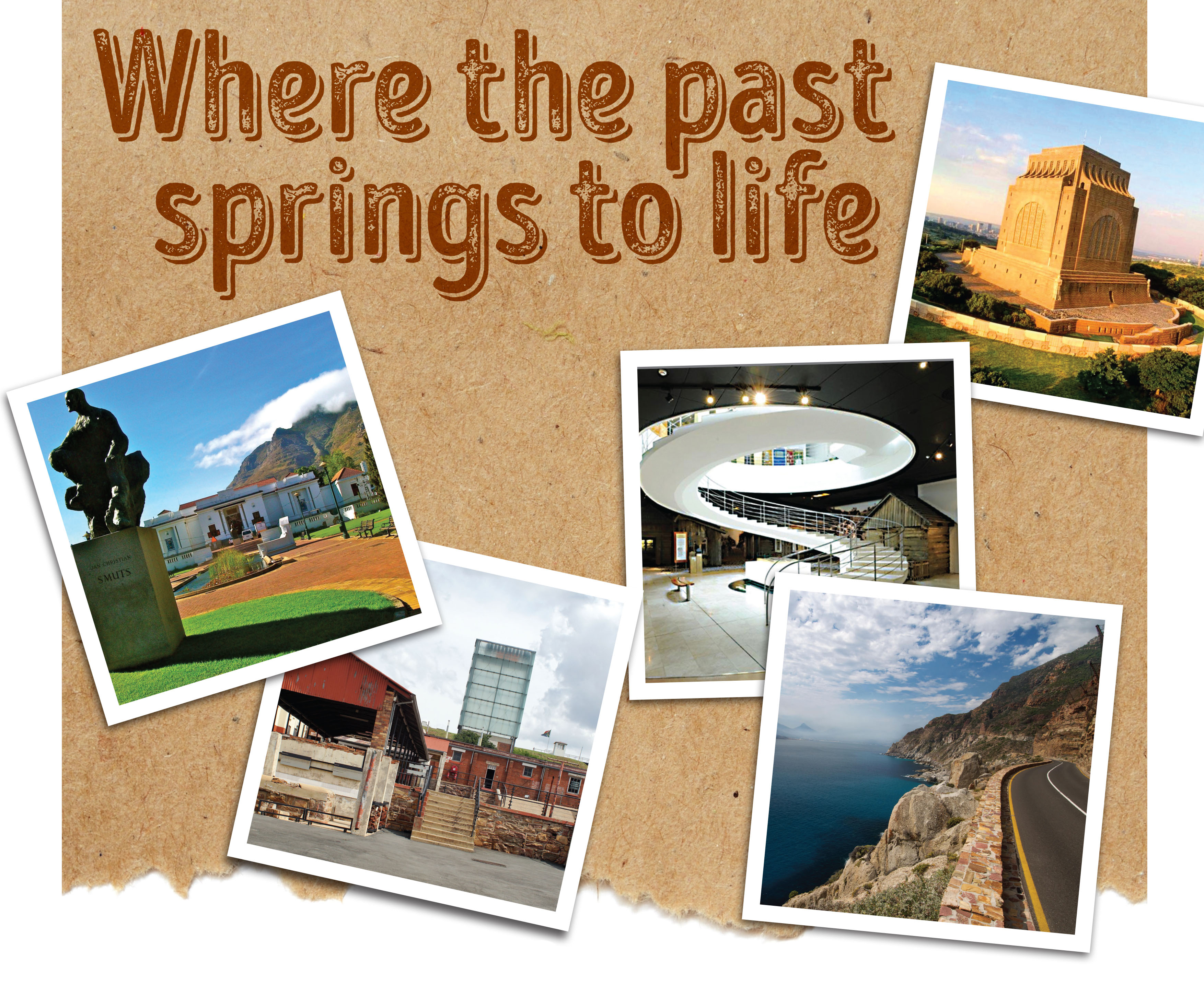
It sounds uninspiring when you read the definition: A museum is an institution devoted to the procurement, care, study and display of objects of lasting interest or value.
Yawn. Yet, when you visit a museum you’ll often find that they are anything but dull - they can be enthralling and are certainly informative and interesting.
In South Arica with its multi-layered and fascinating history, there are many, many museums which cover just about every aspect of our country’s past. Some museums aren’t housed in a building and they are not always devoted to history.
They are, however, spread across the length and breadth of the country. In fact, there is hardly a town, however small, which does not have some sort of museum. Certainly, every major town and city has one or two. To visit them all is impossible.
While you could opt to undertake a museum trip thematically, that would involve a great deal of travelling. Better to pick a place and see as much as you can. Of course, if you are museum hopping in Johannesburg, and Gauteng in general, there is no way one can get to them all. So, let’s do Joburg. And a bit of Pretoria, then, at least, mention Cape Town.
Jozi jails and genes
We begin at the Apartheid Museum in the south, which, as the name
denotes, tells the story of the rise and fall of South Africa’s oppressive past. A team of curators, filmmakers, historians and designers assembled the exhibits, which include film footage, photographs, text panels and artefacts illustrating the country’s history from 1948 to 1994.
Then off to Constitution Hill, just above the city centre. It is so called because the highest court in the land – the Constitutional Court - has its seat here, from whence it looks after the core document of our democracy, the constitution. Constitution Hill was once a military fort and prison, where many famous South African political leaders were imprisoned.
Completely different, yet not far away, is the Origins Centre at Wits University. Devoted to the history of modern mankind, it houses an array of paleoanthropological, archaeological and genetic materials recording the origins, evolution and development of humans.
The other more destructive but also heroic side of mankind is on display at the National Museum of Military History, which is housed next to the zoo. It depicts all the conflicts in which South Africa played a role and boasts an impressive collection of military hardware, decorations, medals and small arms.
Pretoria’s stately symbolism
Then on to Pretoria via the impressive N1, surely one of the best roads globally, yet one which is beginning to become congested again as road building fails to catch up with the growth of vehicular traffic.
Just on the edge of the city is the Voortrekker Monument, which depicts the trek of thousands of Afrikaner families away from their colonial overlords in the Cape in the first third of the 19th century. On the opposite koppie is Freedom Park, which celebrates post-apartheid South Africa and the leaders who helped bring it about democracy.
Symbolically, the two are connected through a road. Visiting both on the same day can give one a feeling for the convoluted history of the country.
The capital is also home to the Museum of Natural History, which focuses on South Africa’s natural heritage. The museum exhibits a wide range of artefacts including hominid fossils from the Cradle of Humankind, mounted specimens of amphibians, fish, invertebrates, mammals and more.
If there is time, pop into Melrose House where the Treaty of Vereeniging was signed in 1902, bringing an end to the Second Anglo-Boer War.
A Cape Town hodgepodge
Then back to the N1, south and ever south – past Johannesburg, Bloemfontein and on and on the excellent road, part of the more than 22 000km of the country’ national network. Ultimately, we arrive in Cape Town, where we’ll go for even more variety:
The National Gallery with art works not only from South Africa but also from other African countries and Europe. Soak up the paintings, photography, sculpture, beadwork, textiles and architecture.
The South African Jewish Museum, housed in the first synagogue established in South Africa, tells the story of the country’s Jewish population and its impressive contribution.
The District Six Museum is dedicated to an area that was home to freed slaves, labourers and immigrants for a century before it was reclassified ‘white’ and the original inhabitants were removed. This tells the story of the suburb’s highlights and, ultimately, its demise.
And that is just a taste of what South Africa has to offer, museum-wise. There is more to experience. Take time, and do it.